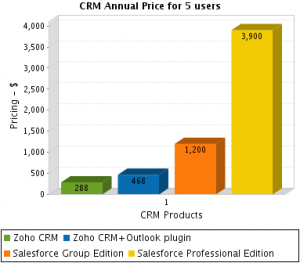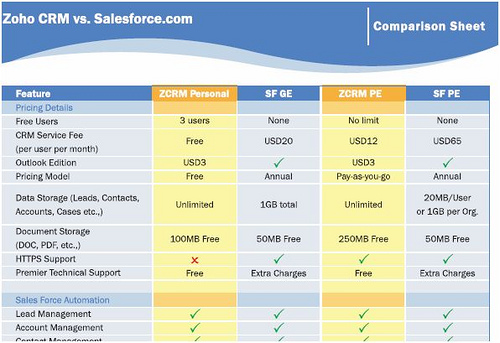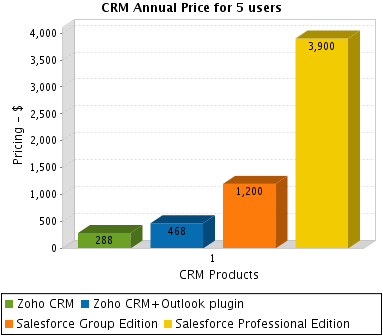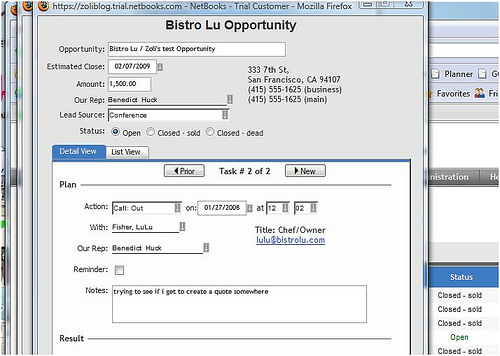The evergreen Best-of-breed vs. Integrated All-in-One Suite debate is back again. This will be a somewhat long post, so let’s sit back and start with some entertainment first.
Episode 2, “Suites Are Sour” is from the mini-series SuiteMates, which I admit I find hilariously entertaining, albeit rather pointless. Why? It’s run by supply chain solution provider Kinaxis, but I don’t see much direct benefit to them. I’m reminded the Bill Gates – Seinfeld commercials: what’s the point? But hey, we’re being entertained:-)
Now, back to those Suites.. are all Suites really Sour? Fellow Enterprise Irregular Brian Summer clearly does not think so, his money is on the Suites, here’s why:
One of the biggest value drivers behind a customer’s move to SaaS is the reduced internal IT support cost a company has when using SaaS products. In the SaaS world, the vendor maintains the application not the customer. But, in a best of breed SaaS world, the customer is back to maintaining interfaces and integration aspects across a number of (SaaS) applications.
If the argument sounds familiar, it is – it was the same in the good old on-premise world, but much of it holds true in the Cloud, too. Besides, this isn’t simply Brian’s own opinion, he has conducted a poll of large corporate CIO’s and most expressed strong preference for integrated business solutions, a.k.a. “one throat to choke” (well, not exactly with those words…).
Call me “old school”, but I also believe in the value of having one tightly integrated system for most business needs, and I believe it’s true not only for large corporations but much smaller businesses. I don’t have CIO’s to back it up, but that’s exactly the point: I am talking about small businesses that don’t have CIO’s at all – in fact they likely don’t even have full time IT stuff ( a good reason for SaaS in the first place), so they clearly lack the bandwidth to deal with integration issues and multiple system providers.
This is not a popular view, after all the Millenial World View is all about open standards and APIs where best-of-breed cloud services that can seamlessly integrate and work together well. I’m all for innovation, and hope we will get there one day – but for now the existing examples are all one-off, individual integrations between specific systems, or at best, ecosystem “satellites” centered around force.com, the Google Apps Marketplace and the like. These are great solutions, but not enough to run a complete business on them. In the meantime businesses are looking for available (Cloud-based) solutions NOW. So yes, I admit, my view is less visionary, more constrained by market realities today.
Brian cites WorkDay as a potential SaaS Suite provider: they have the right DNA, coming from the Founder who built once-successful PeopleSoft, and they are building truly Millenial Software from the grounds up as Phil Wainwright eloquently points out – but for now they still have a Human Resources / Finance focus only. Far from a complete solution, just like the other successful SaaS players in the Enterprise arena, like SuccessFactors, RightNow, ServiceNow, and the like.
Yes, I hear you… I missed a big name: Salesforce.com, the GrandDaddy of SaaS or the Cloud or whatever the next fashionable name will be. An amazingly successful company, and true innovators – having started as CRM company, moving on to as Platform provider, and who knows, tomorrow it may be a Media company? 🙂 As long as the keep on moving to hot new areas, always picking the low-hanging fruit, the company and it’s stock price will remain hot. Again, a great company from an Investor’s point of view. Just not a Complete Business Solution.
One and a half SaaS Suite players
I can count the number of SaaS Business Suites that actually reached significant traction on one hand. In fact the exact number is 1.5. Yes, one and a half – and for now they mostly cater for the SMB segment, with undeniable ambitions to “grow up”.
 The “One” in that 1.5 is NetSuite. Having started as NetLedger, the company has developed an integrated All-in-One solution, encompassing ERP, CRM, e-Commerce .. you name it. Those acronyms are becoming quite useless – in that respect I agree with Dennis Howlett who says we should “dump the disciplines formerly known as CRM/SCRM/SCM/ERP/3PL/HR/HCM/E2.0….etc” – hence I stick to the term All-in-One. Or Business Suite:-) It’s been a long (and winding?) road for NetSuite: developing a full suite of apps you can run a business on is by far more complex than throwing out point applications.
The “One” in that 1.5 is NetSuite. Having started as NetLedger, the company has developed an integrated All-in-One solution, encompassing ERP, CRM, e-Commerce .. you name it. Those acronyms are becoming quite useless – in that respect I agree with Dennis Howlett who says we should “dump the disciplines formerly known as CRM/SCRM/SCM/ERP/3PL/HR/HCM/E2.0….etc” – hence I stick to the term All-in-One. Or Business Suite:-) It’s been a long (and winding?) road for NetSuite: developing a full suite of apps you can run a business on is by far more complex than throwing out point applications.
The company also learned the hard way that with business complexity (please note, I am not talking about Software, but Business complexity) comes a more difficult, stretched out sales process. The fact is, as much as I am a fan of the click-to-try-click-to-buy pull model, the more business areas (and stakeholders) are involved, the less feasible the fully pull model becomes. A Business Suite is not something you simply pick up from an App Store:-)
So NetSuite experimented with more direct sales model first, gradually building towards a more channel-based model, to the recently announced SP100 program in which partner VARs get the entire first year subscription revenue. Along the way they grew functional richness as well as market penetration, to the point that they often compete with Enterprise giant SAP directly. Now, let’s quickly qualify that: NetSuite is not comparable to the SAP Business Suite, but it is often an ideal satellite solution for smaller divisions of large companies, many of which just got acquired and are facing the choice of a long SAP implementation vs. a SaaS solution from NetSuite (see Ray Wang’s post on two-tier ERP strategy)
I should probably mention that way back, before their IPO and the fame that came with it (from the times of NetWho?) I was an early NetSuite customer, picking it over the market leading CRM (and I mean that as a stock symbol), simply because it had a better process flow, even for Sales, which I was heading at the time. (Yes, we got p***ed learning we’d have to create Sales Orders outside the other system, even though we had quotes in the system, only to come back and re-enter the data manually). NetSuite was simply a better CRM system, even before considering other business areas.
Parallel to our NetSuite implementation we introduced a Wiki, JotSpot, which just launched in those days (since acquired by Google) and soon we realized a lot of the support information for Sales could either reside in NetSuite or in the Wiki. This has been bugging me ever since:
Why do structured, process-oriented systems and unstructured collaboration tools live in different worlds?
Like I’ve said, I’m all for Suites, but the true Suite in my definition includes integrated collaboration and communication tools – I’m still waiting for that … perhaps not for long 🙂
Now, if NetSuite was the “one”, who is the “half”? It’s SAP’s very capable, but dormant Business ByDesign – which may just come to life later this year. But I’ve been torturing you long enough, so let’s leave that to another discussion.
(Cross-posted @ CloudAve)







 .
. 

 Thingamy could possibly be a handy tool for consultants, system integrator firms – but they all have their own army of programmers, toolsets..etc, which makes it an awfully hard sell, IMHO.
Thingamy could possibly be a handy tool for consultants, system integrator firms – but they all have their own army of programmers, toolsets..etc, which makes it an awfully hard sell, IMHO.







Recent Comments